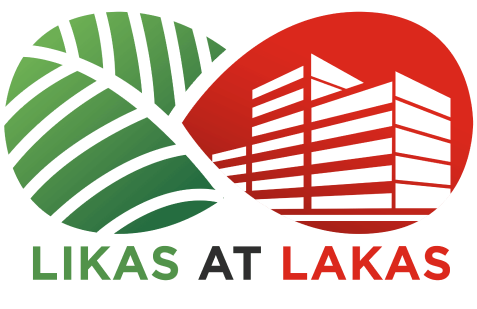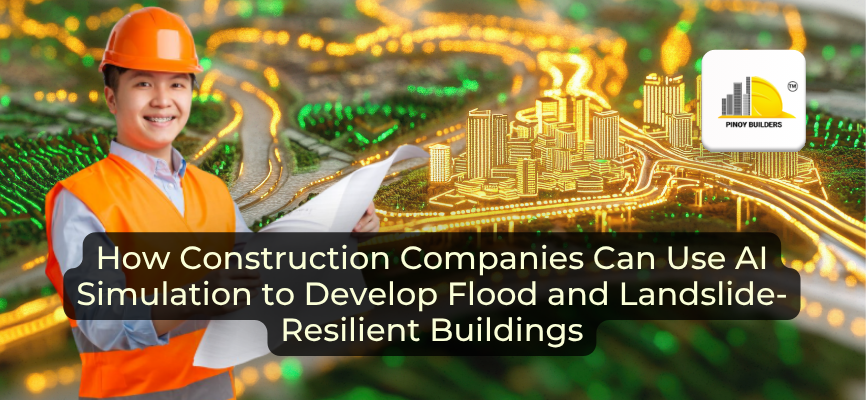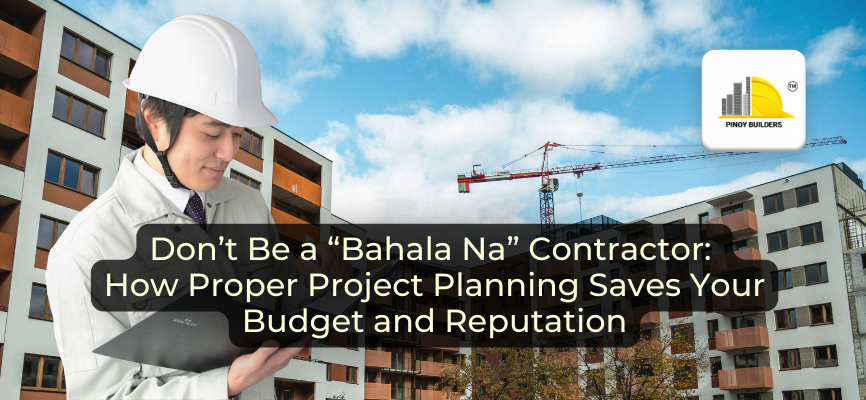Floods and landslides have become familiar sights in many parts of the Philippines, especially when typhoon season rolls in. From coastal towns to mountain communities, more areas are feeling the impact of changing weather patterns and heavier rainfall. These conditions should remind everyone, from homeowners to developers, that building smarter and safer structures is essential.
To meet this challenge, innovative construction companies are using technology to strengthen their designs, with many others expected to follow suit. Artificial Intelligence (AI) takes center stage here because of its powerful simulation tools that let engineers test how buildings would perform during floods or landslides, before construction even begins.
This new approach helps builders create structures that not only meet modern standards but also adapt to the realities of a changing environment. In this article, we will take a closer look at how AI simulations are transforming construction practices and helping shape a more resilient Philippines.
Smarter Design Through AI Simulation
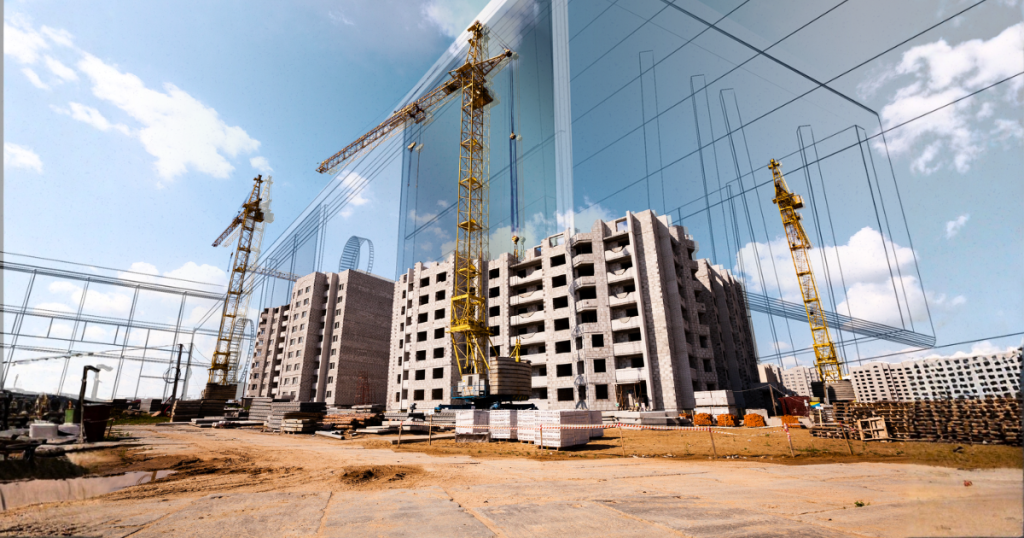
AI-driven simulations and predictive modeling allow engineers to visualize how a structure performs under real-world conditions. These tools use data such as rainfall patterns, soil behavior, and topography to predict how a site might respond during floods or landslides.
Before construction begins, engineers can use AI to simulate water flow, soil saturation, and potential ground movement. This helps identify weak points and reinforce critical areas early in the design process. The result is a blueprint that adapts to the environment with greater precision and confidence.
Several studies and pilot projects already show how this technology is being applied in real-world settings:
- UP Resilience Institute Training (Philippines / Norway) – Researchers from the UP Resilience Institute joined an international program on modeling how landslides and tsunamis interact. The training introduced tools that simulate how debris and water move during disasters. Afterward, the team practiced these techniques in the Philippines by recreating a real landslide-tsunami event that happened in Abuyog, Leyte, to strengthen local disaster planning and research skills.
- Naic, Cavite Flood Mapping – In Naic, Cavite, researchers studied flood risks in more than 500 buildings using GIS, a mapping tool that shows how location and elevation affect flooding. They also used two decision-making methods: AHP, which helps compare factors like rainfall, slope, and distance to rivers, and TOPSIS, which ranks areas from safest to riskiest.
- UCLA Landslide Prediction Model – A team at UCLA developed an AI system that predicts where and why landslides might occur by analyzing terrain slope, soil type, drainage, and climate variables. The model serves as an early-warning and design aid for construction in hilly regions.
- Chiang Rai, Thailand Web GIS Project – Scientists built an AI-powered landslide risk forecasting system using Bi-LSTM models, which is a type of artificial intelligence (AI) model used to analyze patterns that unfold over time, like rainfall, soil moisture, or sensor data. The program combines real-time rainfall data and slope analysis to help planners visualize risk areas and guide site development.
These are just a few examples of how effective AI is in guiding safer, smarter, and more resilient construction decisions across Asia and beyond. For Filipino builders, this brings valuable lessons that teach us how to use existing technology to build safer structures.
Beyond Floods and Landslides: Broader AI Applications in Disaster-Resilient Construction
AI is not limited to predicting floods or landslides. Its applications in construction extend to a wide range of disaster-prevention and monitoring strategies that keep both structures and communities safer.
- Seismic prediction and earthquake-resistant design – Engineers use AI to model how buildings react to tremors and adjust designs to absorb seismic energy more effectively.
- Structural health monitoring – AI systems trained on computer-simulated data can analyze vibrations from buildings or bridges to detect signs of damage or weakness in real time.
- Material optimization – Through video data analysis, AI can recommend the most suitable material combinations for strength, sustainability, and cost-efficiency.
- Smart infrastructure management – AI assists in predictive maintenance, identifying early signs of structural wear and allowing timely repairs that extend building lifespan.
Such modern innovations create a proactive approach that construction professionals can use to design better buildings. Just as they say, prevention is better than cure—instead of reacting after disasters happen, these innovations help construction companies anticipate challenges and better design with foresight.
Building Sustainability and Cost Efficiency with AI
Apart from improving the safety in building design, AI also helps make projects more sustainable and cost-efficient. When applied in the real world, precise data analysis can help engineers reduce waste by estimating the exact materials needed for construction. This accuracy saves both the time spent by the designers and the resources used by the workers.
Apart from that, AI also supports affordable long-term maintenance. When damage is prevented before it occurs, companies save on costly repairs and reconstruction. The technology results in smarter planning, so that every peso spent on the projects contributes to both safety and sustainability of the building.
Building Better Blueprints for the Next Generation
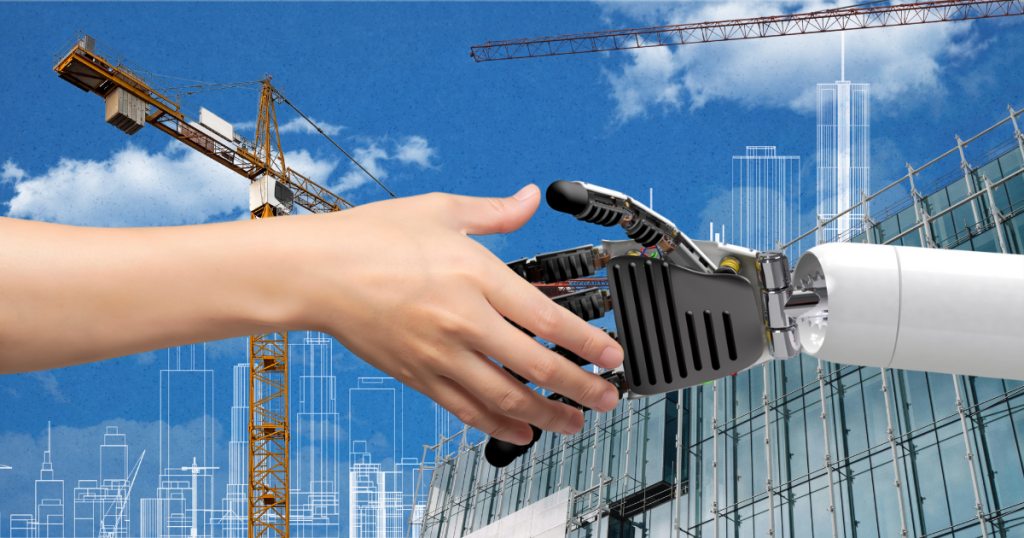
Integrating AI into construction is now becoming a practical step toward climate resilience. It’s not here to replace the designers. Instead, it empowers engineers, developers, and local planners to design buildings that protect lives, livelihoods, and the environment.
Every simulation, every predictive model, and every AI-driven insight brings the construction industry closer to a safer and smarter future. The tools are already here, and it is only a matter of time before we see the benefits of adopting them in our workplaces and putting them to work.
References
Knowledge Sharing Division and NOAH Hazard Assessment Team. (n.d.). UP Resilience Institute Joins Geo-INQUIRE Training on Landslide-Tsunami Modeling. UP Resilience Institute. https://resilience.up.edu.ph/up-resilience-institute-joins-geo-inquire-training-on-landslide-tsunami-modeling/
Singh, S. R. (n.d.). GIS-Based Risk Assessment of Building Vulnerability in Flood Zones of Naic, Cavite, Philippines Using AHP and TOPSIS. MDPI. Retrieved October 7, 2025, from https://www.mdpi.com/2624-795X/5/4/50
University of California – Los Angeles. (2023, June 29). Geologists are using artificial intelligence to predict landslides. ScienceDaily. Retrieved October 6, 2025 from www.sciencedaily.com/releases/2023/06/230628130502.htm
Tengtrairat, N., Woo, W. L., Parathai, P., Aryupong, C., Jitsangiam, P., & Rinchumphu, D. (2021). Automated Landslide-Risk Prediction Using Web GIS and Machine Learning Models. Sensors, 21(13), 4620. https://doi.org/10.3390/s21134620
Rosafalco, L., Torzoni, M., Manzoni, A., Mariani, S., & Corigliano, A. (2021). Online structural health monitoring by model order reduction and deep learning algorithms. arXiv. https://arxiv.org/abs/2103.14328
Wang, C., Zhao, J., & Chan, T.-M. (2023). Artificial intelligence (AI)-assisted simulation-driven earthquake-resistant design framework: Taking a strong back system as an example. Engineering Structures, 297, 116892. https://doi.org/10.1016/j.engstruct.2023.116892
Kim, Y., Oh, G., Youm, K., & Yu, Y. (2025). SlumpGuard: An AI-powered real-time system for automated concrete slump prediction via video analysis. arXiv. https://arxiv.org/abs/2507.10171
Deloitte. (n.d.). Using AI in Predictive Maintenance. Deloitte. Retrieved October 7, 2025, from https://www.deloitte.com/us/en/what-we-do/capabilities/applied-artificial-intelligence/articles/using-ai-in-predictive-maintenance.html

